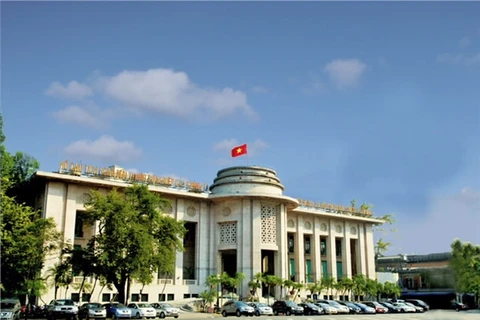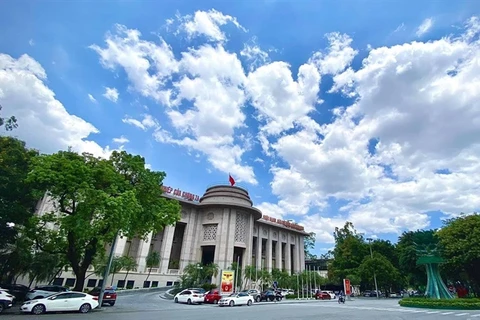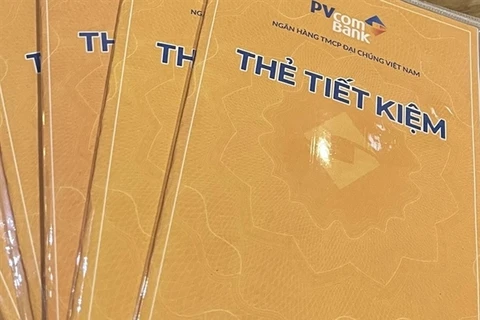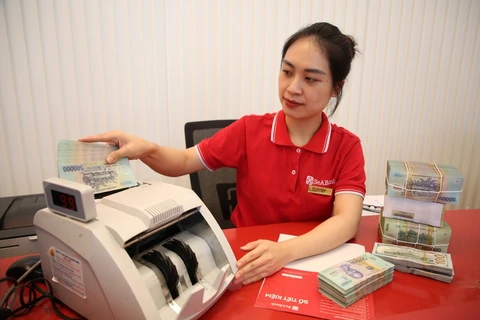Hanoi (VNA) – A decrease in deposit interest rates has been recorded in a number of banks from the beginning of April.
Specifically, the Joint Stock Commercial Bank for Foreign Trade of Vietnam (Vietcombank) has cut the rates by 0.1% per year for savings with terms from 1-9 months.
Currently, those at Vietcombank range from 1.6-4.7% per year, with the highest being applied on individual customers’ deposit for 12 months or more.
A similar reduction is also applied for organisation customers to 1.5-4.2% per year depending on deposit terms.
With the cut, Vietcombank’s deposit interest rates for individual customers are now equal to those at the Vietnam Bank for Agriculture and Rural Development (Agribank).
Meanwhile, the rates at the Bank for Investment and Development of Vietnam (BIDV) range from 1.7-4.7% per year, and the Vietnam Joint Stock Commercial Bank for Industry and Trade (VietinBank) 1.7-4.8% per year.
At the same time, the Prosperity and Growth Commercial Joint Stock Bank (PGBank) on April 1 cut the deposit interest rates for savings with 6-9 month terms by 0.2% to 3.8% per year, while keeping the rates for savings from 1-3 month terms at 2.6-35 per year, and for savings of 12-month term and longer at 4.3% per year. The bank’s highest rate of 5.2% is applied for savings with terms from 24-36 months.
Currently, the highest deposit interest rate listed in the banking system is 10% per year at Vietnam Public Joint Stock Commercial Bank (PVcomBank), applicable to deposits from 2 trillion VND for terms of 12-13 months.
Experts held that the low deposit interest rates will create room for banks to lower their lending interest rates. However, the deposit rates are predicted to hardly be cut further, they added.
Analysts from SSI Securities forecast that deposit interest rates may increase 0.5% from 2023 to 5.5% per year in late 2024, while the lending interest rates may reduce 0.5-1% in the first half of 2024.
Economist Nguyen Tri Hieu commented that input interest rates may increase again in the second half of 2024 when economic activities improve. However, with low deposit interest rates, lending interest rates are still likely to decrease to support businesses, people, and the economy in general, he held./.
Specifically, the Joint Stock Commercial Bank for Foreign Trade of Vietnam (Vietcombank) has cut the rates by 0.1% per year for savings with terms from 1-9 months.
Currently, those at Vietcombank range from 1.6-4.7% per year, with the highest being applied on individual customers’ deposit for 12 months or more.
A similar reduction is also applied for organisation customers to 1.5-4.2% per year depending on deposit terms.
With the cut, Vietcombank’s deposit interest rates for individual customers are now equal to those at the Vietnam Bank for Agriculture and Rural Development (Agribank).
Meanwhile, the rates at the Bank for Investment and Development of Vietnam (BIDV) range from 1.7-4.7% per year, and the Vietnam Joint Stock Commercial Bank for Industry and Trade (VietinBank) 1.7-4.8% per year.
At the same time, the Prosperity and Growth Commercial Joint Stock Bank (PGBank) on April 1 cut the deposit interest rates for savings with 6-9 month terms by 0.2% to 3.8% per year, while keeping the rates for savings from 1-3 month terms at 2.6-35 per year, and for savings of 12-month term and longer at 4.3% per year. The bank’s highest rate of 5.2% is applied for savings with terms from 24-36 months.
Currently, the highest deposit interest rate listed in the banking system is 10% per year at Vietnam Public Joint Stock Commercial Bank (PVcomBank), applicable to deposits from 2 trillion VND for terms of 12-13 months.
Experts held that the low deposit interest rates will create room for banks to lower their lending interest rates. However, the deposit rates are predicted to hardly be cut further, they added.
Analysts from SSI Securities forecast that deposit interest rates may increase 0.5% from 2023 to 5.5% per year in late 2024, while the lending interest rates may reduce 0.5-1% in the first half of 2024.
Economist Nguyen Tri Hieu commented that input interest rates may increase again in the second half of 2024 when economic activities improve. However, with low deposit interest rates, lending interest rates are still likely to decrease to support businesses, people, and the economy in general, he held./.
VNA
























